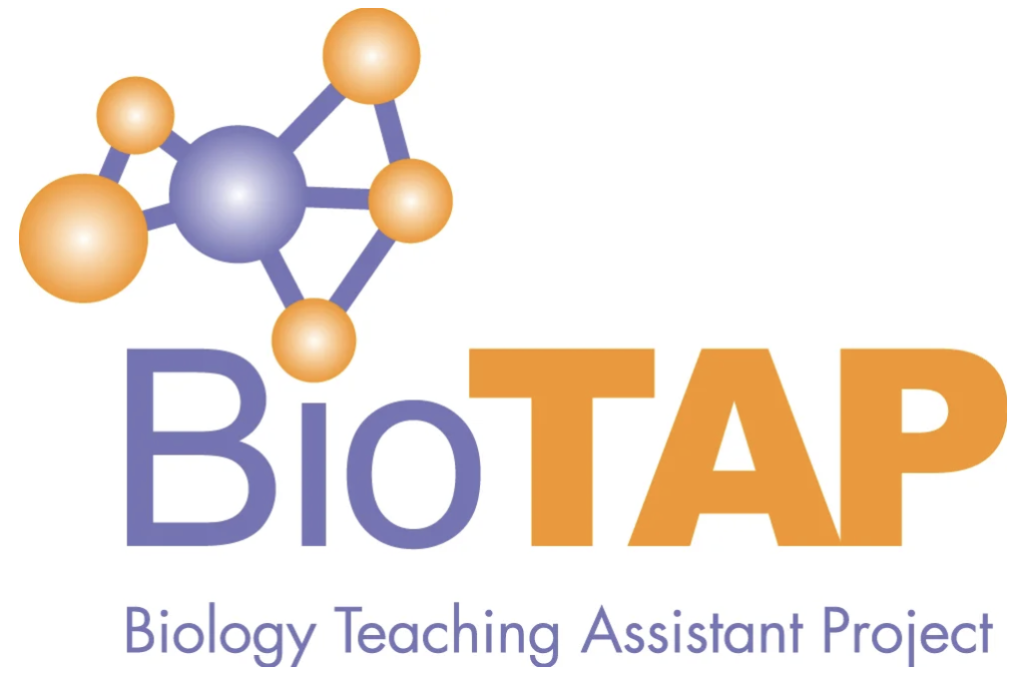Why Study TA TPD?
TPD practitioners may want to assess their programs:
- to provide evidence to support continued funding;
- as part of internal administrative evaluation; or
- as part of a formal education research program.
Many lack the background in education research to design the assessment strategy needed.
BioTAP assembled the collection of resources below to help you think about WHAT you can assess related to TA TPD and HOW to assess it.
If you are new to education research overall, BioTAP also has a collection of tools and resources to help you get started.
Aspects of TA TPD You Can Study
Potential outcome variables for TPD programs are summarized by the framework shown below (from Reeves, et al. 2015.)

Framework for the relationships among TPD outcome variables (blue), TPD contextual variables (yellow), and TPD moderating variables (green). The framework contains three main categories of outcomes at two levels, TA and undergraduate student. Original source: https://www.lifescied.org/doi/10.1187/cbe.15-10-0225
Exemplar Articles
These are research articles exploring outcome variables in the Reeves conceptual framework of TA TPD. They illustrate typical research questions, data collection and analysis methods, and journals that publish TPD research. Click on the authors’ names to be taken directly to the article.
TA cognition pertains to TAs’ knowledge, skills, attitudes, or beliefs about teaching, click below for exemplar research related to GTA cognition:
- Miller, Brickman, and Oliver, 2014 (knowledge, skills, attitudes)
- Gormally, Sullivan, and Szeinbaum, 2016 (knowledge, skills, beliefs)
- Miller, 2010 (knowledge, skills, attitudes, and beliefs)
TA teaching practices concerns the TAs’ approaches to planning, instruction, and assessment, click below for exemplar research related to TA teaching practices:
- Ridgway et al., 2017 (planning, instruction, and assessment)
- Bautista, Schussler, and Rybczynski, 2013 (instruction, assessment)
- Kendall et al., 2014 (instruction)
Undergraduate student outcomes centers on the knowledge and skills of TAs’ students, as well as more distal student outcomes such as retention and graduation, click below for exemplar research related to undergraduate student outcomes:
- Chen et al., 2013 (knowledge and skills)
- Chapin, Wiggins, and Martin-Morris, 2014 (knowledge and skills, retention in biology, and interest)
- Becker et al., 2017 (knowledge and skills, interest)
Data Collection Tools
In order to further explore each of these outcome variables, as well as their relationship to moderators, contextual variables, and more, a TPD researcher needs a variety of data collection tools. Below, you’ll find just a few instruments that have been previously used to measure TPD outcomes.
Instruments that have been previously used to measure TA cognition:
- Anxiety and Confidence in Teaching Scale
- Teachers’ Self-Efficacy Scale
- GTA reflections using the PRIME PCK reflection template
- Discussion supported by Peer Inquiry Observation Protocol, (PIOP)
Instruments that have been previously used to measure TA teaching practices:
- Teaching Assistant Inquiry Observation Protocol (TA-IOP)
- Approaches to Teaching Inventory (ATI)
- College and University Classroom Environment Inventory (CUCEI)
Instruments that have been previously used to measure undergraduate student outcomes:
- Classroom Observation Protocol in Undergraduate STEM
- Student Assessment of Learning Gains (SALG)
- Cognitive Learning Evaluation
- Summative Assessment of Undergraduates
© 2024 All rights reserved. BioTAP Network.
